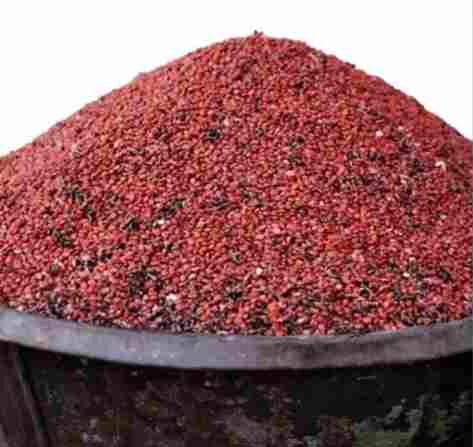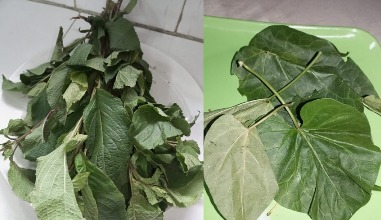
Image from VisualDx
Best home remedies for Whitlow – How to treat whitlow at home | Herpetic whitlow
The pain in the fingernails reaches a level of sensitivity which can tingle or irritate. This infection is often attributed in many instances to the herpes simplex virus.
Usually, it occurs when a patient contacts someone who was previously infected. Symptoms of the condition, along with discomfort, include burning sensations ranging from mild to extreme, fluid-filled blisters in the affected fingers, and red patches on the affected area.
Basically, the bacteria that cause this are contagious and can be spread through close contacts, such as shaking hands. Symptoms include pain, swelling, redness, and pus drainage from one or more fingers or thumbs. These symptoms are typically worst in the morning and may improve during the day. There are two types of treatment available for whitlow: antibiotics or surgery. This article will teach you how to self-treat this disease at home with natural remedies before you have to visit your doctor.
Please keep in mind that whitlow can affect any finger and any pulp space infection is referred to as whitlow. Meanwhile don’t get confused with paronychia that is a bacterial infection of the nail bed.
What is the cause of a whitlow?
A whitlow, is a painful infection that typically occurs around the finger or thumb. It is usually caused by bacteria, most commonly Staphylococcus aureus or Streptococcus pyogenes.
The infection can enter the body through a break in the skin, such as a small cut, hangnail, or puncture wound.
Factors that increase the risk of developing a whitlow include poor hand hygiene, nail biting, finger sucking, frequent thumb sucking in children, and occupations that involve frequent exposure to moisture or contaminated materials.
The bacteria can invade the finger or thumb, leading to redness, swelling, pain, and the formation of a pus-filled blister or abscess. Proper wound care and hygiene, such as keeping the area clean, using antiseptics, and seeking medical attention if an infection is suspected, are crucial for preventing and treating whitlows.
Types of Whitlow
Whitlow is a term used to describe a specific type of infection that occurs around the finger or thumb. There are three main types of whitlows, each with its own characteristics and causes:
Herpetic Whitlow: This type of whitlow is caused by the herpes simplex virus (HSV), usually HSV-1. It typically affects the fingertip and is characterized by painful, fluid-filled blisters. Herpetic whitlow is highly contagious and can be spread to other areas of the body or to other individuals through direct contact with the blisters or fluid. It can occur in individuals with oral or genital herpes, as well as in healthcare workers who come into contact with HSV-infected patients.
Bacterial Whitlow: Bacterial whitlow is the most common type of whitlow and is primarily caused by Staphylococcus aureus or Streptococcus pyogenes bacteria. It usually occurs when bacteria enter through a small break in the skin, such as a cut, hangnail, or puncture wound. Bacterial whitlow is characterized by redness, swelling, pain, and the formation of a pus-filled abscess.
Chronic Whitlow: Chronic whitlow is a less common form of whitlow that typically affects individuals with pre-existing conditions such as eczema or immunodeficiency disorders. It is often caused by fungal or bacterial infections that persist or recur in the fingertip area. Chronic whitlow can be challenging to treat and may require long-term management to prevent recurrent infections.
It is important to seek medical attention if you suspect you have a whitlow, as proper diagnosis and treatment are crucial for effective management and prevention of complications.
What Are the Symptoms of Whitlow? – How to treat whitlow at home
Although whitlow symptoms most typically affect the fingers, other general body symptoms may follow a finger symptom and indicate a serious infection.
The signs and symptoms of herpetic whitlow in the fingers
The following are common symptoms of a whitlow on your fingertips:
- A burning sensation
- The formation of little pimples or blisters
- Itchy sensation or maybe tingling sensations.
- Pains in the affected finger,
- Swelling
- Redness
- Pus drainage from one or more fingers or thumbs
Whitlow can be cured easily with natural home remedies.
A minor finger infection can also be healed by soaking it in the solution described below:
- An antiseptic solution made with warm water
- To calm the area and relief pain, use warm water with Epsom salt.
- Two to four times a day, a 15-minute soak in a mixture of warm water and antibacterial soap.
- Apple cider vinegar can be used since it contains antibacterial and antifungal.
However, if there is no improvement seen after a few days, you should consult a doctor immediately.
How to treat whitlow at home – amazing natural home remedies.
The treatment for whitlow is straightforward and inexpensive, and affected fingers normally recover in approximately a month. The good news is that there are a few natural home treatments that may be used to treat the problem.
However, if the discomfort is unbearable and/or affects multiple fingers, medical attention should be sought.
Try some of the home treatments suggested below to provide symptomatic relief from whitlow and hasten the recovery process.
- Virgin Coconut Oil
- Aloe Vera
- Ice Packs
- Tea Tree Oil
- Using Garlic cloves and garlic oil
- Licorice Root Powder
- Hydrogen Peroxide
- Honey and Peppermint Tea Bag treatment
How to treat whitlow at home – In Nigeria, how do you treat whitlow?
Here are a few fast home remedies for whitlow:
Warm Soaks: Soaking the affected finger or thumb in warm water can help reduce pain, promote circulation, and encourage the formation of pus drainage. Add a tablespoon of Epsom salt to warm water and soak the finger for 10-15 minutes, a few times a day.
Antibacterial Wash: Gently wash the affected area with mild antibacterial soap and warm water. This helps keep the area clean and prevent further infection. Be sure to rinse thoroughly and pat dry.
Over-the-Counter Pain Relievers: Nonsteroidal anti-inflammatory drugs (NSAIDs), such as ibuprofen or acetaminophen, can help alleviate pain and reduce inflammation associated with whitlow. Follow the instructions on the packaging and consult a healthcare professional if you have any concerns.
Natural Antimicrobial Agents: Applying natural antimicrobial agents, such as tea tree oil or diluted apple cider vinegar, to the affected area may help inhibit bacterial growth. Remember to dilute these solutions properly and avoid using them if you have any known sensitivities or allergies.
Protect the Affected Finger: Covering the whitlow with a clean, sterile bandage can help protect it from further irritation or infection. Change the bandage regularly and keep the area dry.
Frequently Asked Questions On How To Cure Whitlow Quickly with Natural Home Remedies
What can be used to treat whitlow?
Among the antivirals used to treat herpetic whitlow are:
- Acyclovir pills.
- Valacyclovir pills
- Acyclovir ointment
- Famciclovir pills.
They are all good ointment for whitlow
Is it possible to cure whitlow using kerosene?
Traditionally people use kerosene to treat whitlow; just deep your finger into a container or gallon of kerosine as many times as possible per day for like 2 to 3 days.
Or before going to bed, combine palm oil and kerosene and apply it all over your hand.
Read Also >>>>>> How To Boost Immune System
Is it possible to cure whitlow with lime?
Yes! Make a hole in the middle of the lime and insert the infected finger into it, then use the lime as a bandage to cure the Whitlow.
Is it possible to get rid of whitlow using garlic?
Put your whitlow finger in lime or lemon, salt, and garlic warm water, as it helps ease pain and facilitate quick recovery of the finger from Whitlow.
Is it possible to get rid of whitlow with petrol?
You can recover quickly from herpetic finger or whitlow finger if you take the right treatment. The painful ache is relieved by dipping the finger in salt warm water. Although some people dip their finger in petrol to get relief.
Shea butter is used to treat whitlow mix with salt.
When a whitlow gets full-blown due to a lack of initial treatment, shea butter, also known as “Ori” in Yoruba, should be used mixed with salt and rub it on the infected finger. It helps burst the swelling and drain pus.
Should a whitlow be covered?
Yes! You could be instructed to bandage your finger. This may aid in preventing the spread of the infection.
Is it possible to prevent Finger Infection?
Yes! Remember to wash your hands every now and then (Regularly).
Do not exchange personal items like nail cuter to avoid being infected by individuals who have the illness.
Sucking or chewing your fingers damages the nail structure, allowing viral entrance simpler and increasing the likelihood of sickness transmission.
To avoid damaging your skin and increasing the chance of herpes infection, carefully cut and trim your nails.
Conclusion
If there is no improvement seen after a few days, you should consult a doctor immediately.


